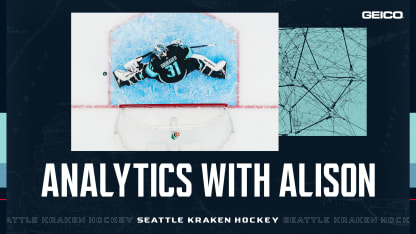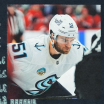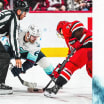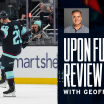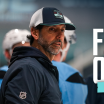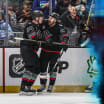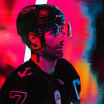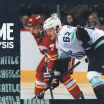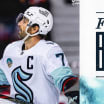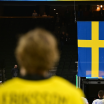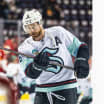This wasn't the very first time Seattle had put out five forwards on the power play (per Sportlogiq it had happened already for 3.5 minutes through March of this season), but it was one of the most noticeable. So,
bundled by GEICO
, we wanted to look into this new trend that has been popping up around the league and see who is using it, how it's working, and what results the Kraken have had.
Let's dig in.
First and foremost, it's important to remember that this five-forward look isn't yet exactly commonplace in the NHL. So, anything we look at statistically is coming from a very small sample size. But that being said, per Sportlogiq as of March 29, all but two NHL teams (Anaheim, Dallas) have used five forwards on the power play at some point this season. If we look at how much this happens as a percentage of total power-play time, Chicago, Columbus and Florida have done it the most. Ottawa, Boston, and San Jose have used it the least.
To evaluate which teams are most successful, we looked at the percent of shot quality generated for versus the percent of shot quality allowed against. Over half the league, (17 teams, including Seattle), have generated 100 percent of the shot quality when playing an all-forward power play.
But, an "all offense" power play isn't necessarily a guaranteed success. Four teams (Vegas, Colorado, Winnipeg and Toronto) have below 50 percent of all shot quality when using this deployment and Carolina just clears that bar at 53.16 percent. Two more teams (Detroit, Tampa Bay) come in earning between 70 and 60 percent of all shot quality. In fact, as a result of their analysis, Sportlogiq's Kenny Matheson said that league-wide, there's been a drop in getting the advantage in shot quality with five forwards on the ice.
So, back to Seattle using five forwards the last two games. Over the past two games, the Kraken put out five forwards on the power play for 4:24 of time when the opponent had just three skaters on the penalty kill.
The primary unit was Yanni Gourde, Jordan Eberle, Daniel Sprong, Jared McCann and Matty Beniers, with Alexander Wennberg and Karson Kuhlman also seeing time. These players won all six of the faceoffs they were involved in and generated 12 shots on goal out of 18 shot attempts total. That offensive effort was enough to equal 2.34 expected goals. While the Kraken didn't score on the five-on-three, they still had five forwards on the ice as the second two-man advantage expired in Vancouver. One second after the Canucks got one skater back, Eberle put the puck in the net off an attack that involved precision passing by every Seattle skater on the ice.
